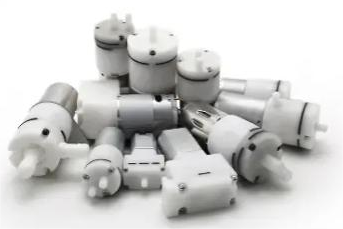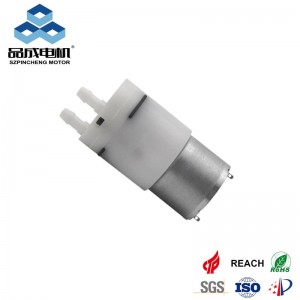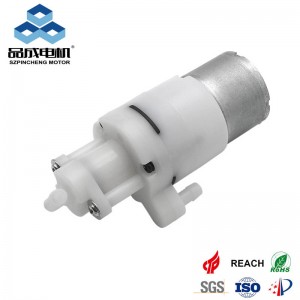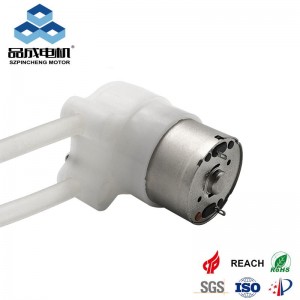Micro water pumps supplier
Caption: Advanced microfabrication techniqes driving micropump efficiency innovations.
Introduction
As miniaturization continues to reshape industries from healthcare to renewable energy, the demand for high-efficiency micropumps—devices capable of precise fluid manipulation at microscale—has never been greater. These pumps are critical for applications like medical drug delivery, environmental sensing, and compact energy systems. However, optimizing their performance requires overcoming challenges such as energy consumption, flow precision, and miniaturization limits. This article explores key research and development strategies to unlock next-generation micropump efficiency.
1. Material Innovation for Enhanced Performance
1.1 Advanced Functional Materials
The choice of materials directly impacts micropump efficiency by influencing durability, energy loss, and fluid compatibility.
- Nanocomposites: Graphene oxide and carbon nanotube (CNT) composites offer superior mechanical strength and thermal conductivity. For example, CNT-reinforced diaphragms reduce flexural fatigue in piezoelectric pumps, extending operational life by 30% while maintaining high-frequency actuation (10–100 kHz).
- Shape Memory Alloys (SMAs): Nickel-titanium alloys enable compact, high-force actuators in valveless pumps. Their ability to convert thermal energy into mechanical motion reduces reliance on bulky motors, achieving energy savings of up to 50% compared to traditional electromagnetic designs.
- Hydrophilic Coatings: Super-hydrophilic surface treatments (e.g., silica nanoparticles) minimize fluid adhesion in microchannels, reducing friction losses by 20–25% and improving flow consistency in low 雷诺数 (Re < 100) environments.
1.2 Biocompatible and Sustainable Materials
In medical applications, biopolymers like polylactic acid (PLA) and silk fibroin are gaining traction for disposable micropumps, ensuring biocompatibility while reducing environmental impact. These materials align with circular economy goals, as they are recyclable or biodegradable without compromising mechanical properties.
2. Design Optimization through Multiphysics Modeling
2.1 Computational Fluid Dynamics (CFD) for Flow Enhancement
CFD simulations (e.g., ANSYS Fluent, COMSOL) allow engineers to refine microchannel geometries:
- Tapered Inlet/Outlet Design: Reducing abrupt cross-sectional changes minimizes turbulence, improving volumetric efficiency from 65% to 85% in peristaltic pumps.
- Asymmetric Valve Structures: In diffuser-nozzle pumps, optimizing the angle between diffuser (12°) and nozzle (8°) channels increases forward-backward flow ratio by 40%, enhancing net flow rate at low pressures (0.1–1 kPa).
2.2 Energy-Efficient Actuation Mechanisms
Selecting the right actuation technology is critical:
- Piezoelectric Actuators: Offer high-frequency operation (1–10 kHz) with low power consumption (5–50 mW), ideal for precision applications like insulin pumps.
- Electrostatic Motors: Provide ultra-compact designs (≤1 mm³) but require high voltage (100–300 V); recent advancements in dielectric elastomers reduce voltage needs by 50%.
- Thermal Bubble Pumps: Excel in single-use lab-on-a-chip devices, achieving picoliter-scale precision with rapid response times (<1 ms), though energy efficiency improves with nanowire heaters (10x lower power than traditional resistors).
3. Advanced Fabrication Techniques for Microscale Precision
3.1 MEMS-Based Microfabrication
Standard MEMS processes like photolithography and deep reactive ion etching (DRIE) enable micron-scale features:
- 3D Microchannels: Multi-layer SU-8 lithography creates complex fluidic networks with channel widths down to 5 μm, critical for integrating pumps with sensors (e.g., pressure sensors for closed-loop control).
- Microvalve Integration: Fabricating passive check valves (e.g., cantilever valves with 50 μm thickness) alongside pump chambers reduces external component reliance, minimizing dead volume and improving response time.
3.2 Additive Manufacturing (3D Printing)
Polyjet and two-photon polymerization (TPP) technologies offer design flexibility:
- TPP for Nanostructures: Enables sub-100 nm feature sizes, allowing the creation of microimpellers with optimized blade curvatures (e.g., 30° helical angle for 25% higher flow rate in centrifugal pumps).
- Multi-Material Printing: Combines rigid structural parts (ABS) with flexible seals (PDMS) in a single build, reducing assembly errors and improving leak resistance by 30%.
4. Intelligent Control Systems for Adaptive Efficiency
4.1 Sensor Integration & Feedback Loops
Real-time monitoring enhances performance:
- Flow Rate Sensing: Thermal anemometry sensors (accuracy ±2%) embedded in pump outlets adjust motor speed to maintain target flow, reducing energy waste during low-demand periods.
- Viscosity Compensation: Pressure sensors paired with machine learning algorithms detect fluid property changes, automatically optimizing actuation parameters (e.g., stroke volume in piston pumps) for 15% better efficiency across different fluids.
4.2 Advanced Control Algorithms
- PID Control: Proportional-integral-derivative algorithms stabilize flow under varying backpressures, achieving <5% deviation from setpoints in pulsatile flow applications.
- Adaptive Fuzzy Logic: Outperforms traditional PID in nonlinear systems (e.g., valveless pumps), improving pressure regulation by 20% in harsh environments (temperature fluctuations: ±10°C).
5. Cross-Disciplinary Research for Breakthrough Innovations
5.1 Bioinspired Design
Nature provides blueprints for efficiency:
- Dragonfly Wing Venation: Mimicking hierarchical vein structures in pump diaphragms increases structural efficiency, allowing 20% higher pressure generation with the same actuation force.
- Cicada Wing Surface Textures: Superhydrophobic nanopatterns reduce fluid adhesion, enabling self-cleaning microchannels that maintain efficiency over 10,000 cycles without maintenance.
5.2 Interdisciplinary Collaboration Models
Partnerships between material scientists, fluid dynamicists, and control engineers accelerate progress:
- Industry-Academia Projects: Companies like Xylem and MIT’s Microsystems Lab collaborate on piezoelectric micropumps for IoT-enabled water quality sensors, achieving 40% higher sensitivity with integrated energy harvesting (solar/thermal).
- Open-Source Platforms: Tools like the MEMS Design Kit (MDK) and open source CFD software (OpenFOAM) lower R&D barriers, fostering rapid prototyping and knowledge sharing.
6. Testing and Validation for Real-World Performance
6.1 Standardized Metrics
Key performance indicators (KPIs) for efficiency include:
- Power Efficiency (μW/(μL/min)): Measures energy per unit flow; state-of-the-art pumps achieve 0.5–2 μW/(μL/min) in low-flow regimes (<10 μL/min).
- Pressure-Flow Curve Matching: Ensures optimal operation across target ranges (e.g., 0–5 kPa for lab-on-a-chip vs. 50–200 kPa for industrial cooling).
6.2 Environmental Stress Testing
Rigorous testing in extreme conditions (temperature: -20°C to 85°C, humidity: 10–90%) validates reliability. For example, automotive micropumps for coolant systems must maintain 90% efficiency after 1,000 thermal cycles.
Conclusion
Developing high-efficiency micropumps requires a holistic approach that merges material science, computational design, advanced manufacturing, and intelligent control. By leveraging nanotechnology, bioinspiration, and cross-disciplinary innovation, researchers can overcome miniaturization trade-offs and unlock new applications in healthcare, green energy, and environmental monitoring. As industries demand ever-smaller, smarter fluid management solutions, these strategies will drive the next wave of micropump advancements, ensuring sustainable and precise performance for decades to come.
you like also all
Post time: May-08-2025





